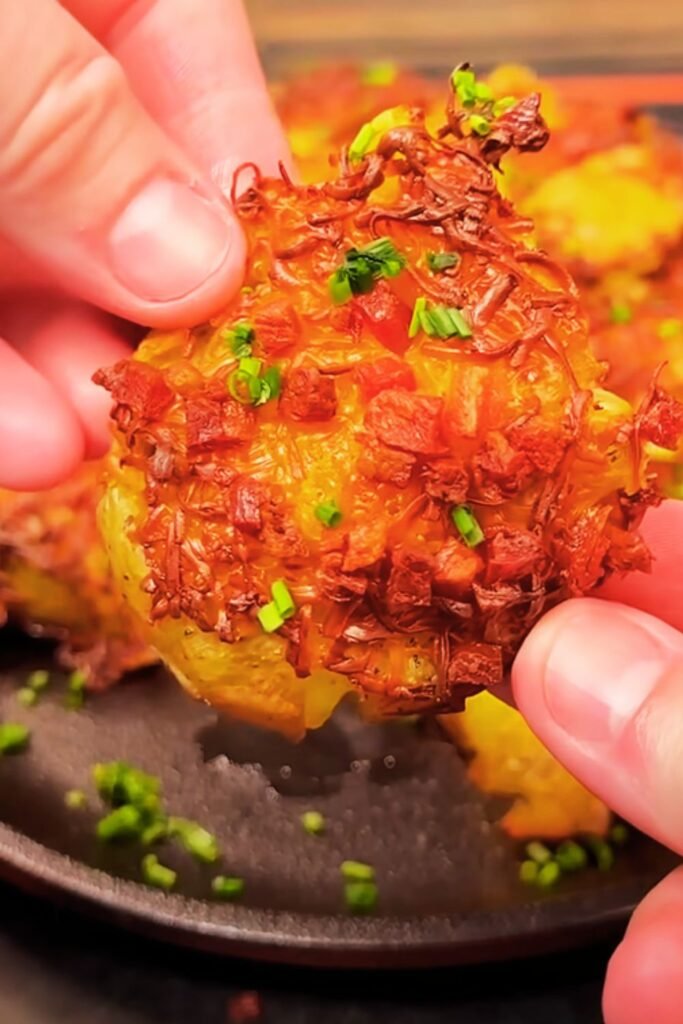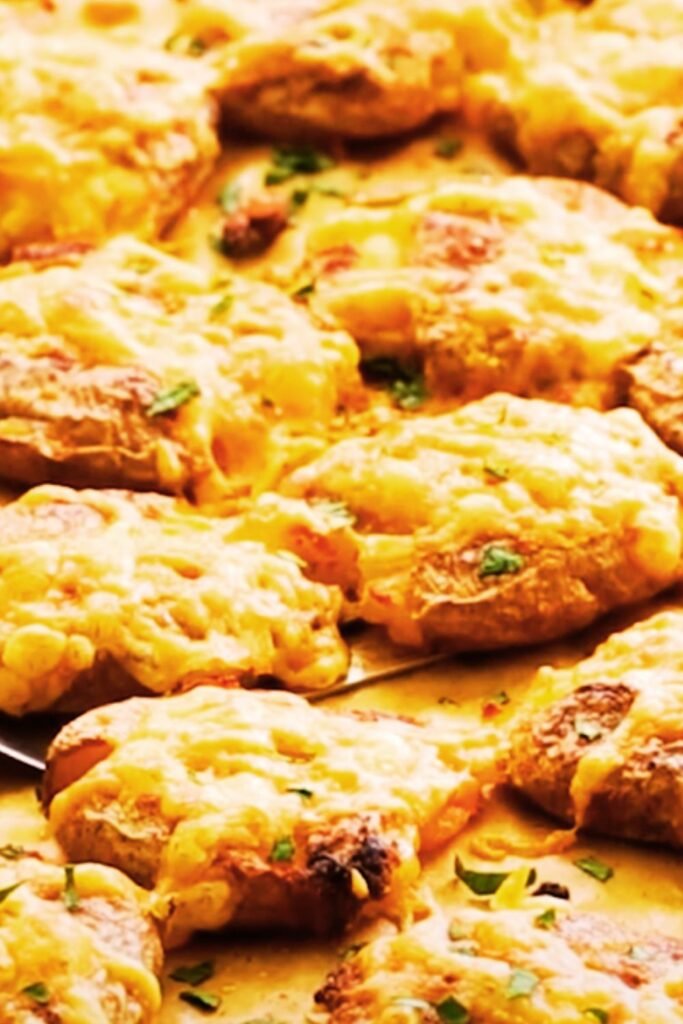There’s something absolutely magical about the way perfectly layered potatoes transform in the oven, absorbing rich cream while developing that coveted golden-brown top. When I first discovered gratin dauphinoise during my culinary adventures in France, I knew I had found something special. But over the years, I’ve learned that the classic version, while magnificent, could be elevated even further.
My roasted garlic and caramelized onion variation has become the star of every dinner party I host. The sweet, jammy onions weave through layers of tender potatoes, while roasted garlic adds a mellow, nutty depth that transforms this humble dish into something extraordinary. This isn’t just comfort food – it’s comfort food with sophistication.
Understanding Gratin Dauphinoise: The Foundation
Before diving into my enhanced version, let me explain what makes authentic gratin dauphinoise so special. This classic French dish originated in the Dauphiné region of southeastern France, where resourceful cooks discovered that thinly sliced potatoes, when layered with cream and slowly baked, created pure magic.
Traditional Gratin Dauphinoise: A classic French potato dish consisting of thinly sliced potatoes layered in a buttered dish, covered with cream or milk, and baked until golden and tender.
Roasted Garlic: Whole garlic bulbs roasted until soft and caramelized, developing a sweet, nutty flavor that’s much milder than raw garlic.
Caramelized Onions: Onions cooked slowly over low heat until their natural sugars develop into a rich, golden-brown sweetness.
The beauty of gratin dauphinoise lies in its simplicity, but that simplicity demands perfection in technique. Every slice must be uniform, every layer must be seasoned, and the cream-to-potato ratio must be precisely balanced.
The Science Behind Perfect Gratin
Understanding the science helps create consistent results. When potatoes are sliced thin and layered, they release starch as they cook. This starch thickens the cream, creating that luscious, cohesive texture we crave. The key is achieving the perfect balance where the potatoes are tender but not mushy, and the sauce is thick but not gluey.
Temperature control is crucial. Too high, and the top burns before the potatoes cook through. Too low, and you’ll never achieve that golden crust. My method uses a moderate oven with strategic temperature adjustments to ensure even cooking throughout.
My Enhanced Recipe Development
After countless experiments in my kitchen, I’ve perfected this variation that honors the original while adding layers of complexity. The roasted garlic becomes sweet and spreadable, infusing every bite with mellow garlic flavor. The caramelized onions add sweetness and umami depth that complements the richness of the cream.
I’ve also refined the technique to ensure consistent results every time. From the exact thickness of potato slices to the ideal cream temperature, every detail matters.

Essential Ingredients and Their Roles
| Ingredient | Quantity | Purpose | Quality Tips |
|---|---|---|---|
| Yukon Gold Potatoes | 3 lbs | Main component, holds shape well | Choose firm, unblemished potatoes |
| Heavy Cream | 2 cups | Creates rich, creamy base | Use 35% fat content minimum |
| Whole Milk | 1 cup | Lightens cream, prevents heaviness | Full-fat for best results |
| Garlic Bulbs | 2 large | Adds sweet, mellow flavor | Look for firm, tight bulbs |
| Yellow Onions | 2 medium | Provides caramelized sweetness | Sweet onions work well too |
| Gruyère Cheese | 1 cup grated | Nutty flavor, excellent melting | Aged 6-12 months preferred |
| Butter | 4 tablespoons | Richness and browning | European-style for best flavor |
| Fresh Thyme | 2 tablespoons | Herbal brightness | Strip leaves from stems |
| Nutmeg | 1/4 teaspoon | Warm spice complexity | Freshly grated preferred |
| Sea Salt | To taste | Enhances all flavors | Flaky sea salt for finishing |
| White Pepper | 1/2 teaspoon | Heat without black specks | Freshly ground preferred |
Equipment Essentials
The right tools make this dish significantly easier to execute perfectly:
Mandoline Slicer: Essential for uniform potato thickness. I recommend 1/8-inch slices for optimal cooking and presentation.
9×13 Baking Dish: Heavy ceramic or enameled cast iron works best for even heat distribution.
Fine-Mesh Strainer: For silky smooth cream mixture without lumps.
Digital Kitchen Scale: Precision matters in French cooking.
Step-by-Step Preparation Method
Roasting the Garlic
I always start with the garlic since it needs the longest cooking time. Preheat your oven to 400°F. Slice the top quarter off each garlic bulb, exposing the clove tops. Drizzle with olive oil, wrap in foil, and roast for 45-60 minutes until the cloves are golden and spreadable.
The roasted garlic can be prepared up to three days ahead and stored in the refrigerator. This make-ahead element makes dinner party preparation much more manageable.
Caramelizing the Onions
While the garlic roasts, I tackle the onions. Slice them thinly – about 1/4-inch thick. Heat two tablespoons of butter in a large skillet over medium-low heat. Add the onions with a pinch of salt and cook slowly, stirring occasionally, for 45-60 minutes.
The key to perfect caramelized onions is patience. They should become deep golden brown and jammy in texture. If they start to brown too quickly, lower the heat. The natural sugars need time to develop properly.

Preparing the Potatoes
Using a mandoline or very sharp knife, slice potatoes into 1/8-inch thick rounds. I don’t peel them – the skin adds texture and nutrients. Immediately place slices in cold water to prevent browning and remove excess starch.
Pat the potato slices completely dry before layering. Any residual moisture will dilute the cream and affect the final texture.
Creating the Cream Base
In a large saucepan, combine heavy cream, milk, and squeezed roasted garlic cloves. Heat gently until steaming, then whisk until smooth. Season with salt, white pepper, and freshly grated nutmeg. Strain through a fine-mesh sieve for ultimate smoothness.
The cream should coat the back of a spoon lightly. If it seems too thick, add a bit more milk. Too thin, and it won’t create the proper binding.
Assembly Technique
Butter your baking dish generously. Create your first layer with overlapping potato slices, like fallen dominoes. Season lightly with salt and pepper, then spread a portion of caramelized onions evenly over the potatoes.
Continue layering: potatoes, seasoning, onions, repeat. For a 9×13 dish, I typically create four layers. Pour the warm cream mixture over the top, ensuring it seeps between all layers.
The cream should come just to the top layer of potatoes, not covering them completely. Sprinkle grated Gruyère evenly over the surface and dot with remaining butter pieces.
Baking to Perfection
Cover tightly with foil and bake at 375°F for 45 minutes. Remove foil and continue baking for 30-40 minutes until the top is golden brown and a knife inserted in the center meets no resistance.
The internal temperature should reach 165°F for food safety, but more importantly, the potatoes should be completely tender when pierced.
Let the gratin rest for 15-20 minutes before serving. This resting period allows the cream to set properly and makes slicing much easier.

Nutritional Information and Dietary Considerations
| Nutrient | Per Serving (8 servings) | Daily Value % |
|---|---|---|
| Calories | 385 | 19% |
| Total Fat | 24g | 37% |
| Saturated Fat | 15g | 75% |
| Cholesterol | 85mg | 28% |
| Sodium | 245mg | 11% |
| Carbohydrates | 35g | 13% |
| Fiber | 3g | 11% |
| Protein | 10g | 20% |
| Vitamin C | 45% DV | 45% |
| Potassium | 15% DV | 15% |
While this dish is indulgent, it provides substantial nutrition from the potatoes, including vitamin C, potassium, and fiber. The dairy contributes calcium and protein.
Variations and Adaptations
Over the years, I’ve developed several variations that cater to different tastes and dietary needs:
Lighter Version: Substitute half the heavy cream with whole milk and reduce cheese by half. The result is still creamy but less rich.
Herb Variations: Try fresh rosemary, sage, or a combination of herbs de Provence for different flavor profiles.
Cheese Alternatives: Aged cheddar, Parmesan, or even goat cheese create interesting variations.
Vegetable Additions: Thinly sliced leeks, fennel, or mushrooms can be layered between potatoes for added complexity.
Storage and Reheating Guidelines
| Storage Method | Duration | Quality Notes |
|---|---|---|
| Refrigerator | 3-4 days | Cover tightly to prevent drying |
| Freezer | 2-3 months | Texture changes slightly |
| Room Temperature | 2 hours maximum | Food safety concern |
For reheating, I prefer the oven at 325°F until warmed through. Microwave reheating works but can create uneven heating and affect texture.
Troubleshooting Common Issues
Watery Gratin: Usually caused by potatoes not being dried properly or cream mixture being too thin. Always pat potatoes dry and ensure proper cream consistency.
Burned Top: Oven temperature too high or rack position too close to heat source. Use middle rack and cover with foil if browning too quickly.
Undercooked Potatoes: Slices too thick or oven temperature too low. Maintain consistent 1/8-inch thickness and proper temperature.
Broken Sauce: Overheating can cause cream to curdle. Keep temperatures moderate and don’t boil the cream mixture.
Serving Suggestions and Pairings
This gratin pairs beautifully with roasted meats, particularly beef tenderloin, lamb, or roasted chicken. The richness complements lean proteins perfectly.
For vegetarian meals, serve alongside a crisp green salad with vinaigrette to cut through the richness. Roasted vegetables like Brussels sprouts or green beans provide nice textural contrast.
The dish is substantial enough to serve as a main course with a substantial salad and crusty bread.
Seasonal Adaptations
Spring: Add fresh peas or asparagus between layers for bright color and flavor.
Summer: Include fresh tomatoes and basil for a Mediterranean twist.
Fall: Layer in thinly sliced apples or pears for subtle sweetness.
Winter: Root vegetables like parsnips or turnips can be mixed with potatoes.
Make-Ahead Strategies
This gratin is excellent for entertaining because much of the work can be done ahead:
Day Before: Roast garlic, caramelize onions, and slice potatoes. Store separately in refrigerator.
Morning Of: Assemble completely but don’t bake. Cover and refrigerate up to 8 hours.
Baking Day: Allow to come to room temperature for 30 minutes before baking. May need additional 10-15 minutes cooking time if cold.
Professional Tips from My Kitchen
After making this dish hundreds of times, I’ve learned these crucial details:
The potato variety matters enormously. Yukon Golds hold their shape perfectly while providing creamy texture. Russets can become too mealy, while waxy potatoes won’t absorb the cream properly.
Temperature control throughout the process is critical. From gently heating the cream to maintaining steady oven temperature, every step requires attention.
Seasoning each layer individually creates much better flavor distribution than trying to season just the cream or just the top.
Cost Analysis and Budget Considerations
| Cost Category | Approximate Cost | Percentage of Total |
|---|---|---|
| Potatoes | $3.00 | 25% |
| Dairy Products | $6.00 | 50% |
| Cheese | $2.00 | 17% |
| Aromatics | $1.00 | 8% |
| Total | $12.00 | 100% |
At approximately $1.50 per serving for eight generous portions, this represents excellent value for such an elegant dish.
Questions and Answers
Q: Can I make this dish dairy-free? I’ve experimented with coconut cream and cashew cream alternatives. While the flavor changes significantly, it’s possible to create a delicious version using full-fat coconut milk mixed with cashew cream for richness.
Q: How thin should I really slice the potatoes? Exactly 1/8-inch is ideal. Thicker slices won’t cook evenly, and thinner slices can break down and become mushy. A mandoline slicer is truly worth the investment for consistent results.
Q: Why do my onions never caramelize properly? Patience is key – true caramelization takes 45-60 minutes over low heat. Many people try to rush this process with higher heat, which browns the onions but doesn’t develop the deep, sweet flavors.
Q: Can I prepare this dish completely ahead of time? Yes, but with some considerations. Assemble completely up to 24 hours ahead, but don’t bake. The potatoes may absorb more cream, so you might need to add a bit more before baking.
Q: What’s the difference between gratin dauphinoise and scalloped potatoes? Traditional gratin dauphinoise uses only cream, while scalloped potatoes often include cheese and sometimes flour for thickening. My version bridges both traditions.
Q: How do I prevent the cream from curdling? Never let the cream mixture boil. Heat gently until steaming, and if it starts to separate, remove from heat immediately and whisk vigorously.
Q: Can I use a different type of cheese? Absolutely. Gruyère is traditional, but aged cheddar, Comté, or even Parmesan work beautifully. Choose cheeses that melt well and complement the other flavors.
Q: Is it necessary to roast the garlic, or can I use fresh? Roasted garlic is much milder and sweeter than fresh. Fresh garlic would be overpowering and harsh in this delicate dish. The roasting process is essential for the proper flavor balance.
Q: How do I know when the gratin is properly done? The top should be golden brown, and a knife should slide easily through all layers without resistance. The internal temperature should reach 165°F, and the cream should be thickened and bubbling gently around the edges.
Q: Can I freeze leftover gratin? While possible, freezing affects the texture significantly. The cream can separate, and the potatoes become watery. It’s best enjoyed fresh or refrigerated for up to four days.
This roasted garlic and caramelized onion gratin dauphinoise represents everything I love about French cooking – simple ingredients transformed through technique into something extraordinary. The layers of flavor develop as it bakes, creating a dish that’s both comforting and sophisticated.
Every time I serve this at dinner parties, guests ask for the recipe. It’s become my signature dish, the one that friends request for special occasions. The combination of sweet caramelized onions, mellow roasted garlic, and perfectly cooked potatoes in rich cream creates a harmony that’s simply irresistible.
Take your time with each step, especially the caramelizing and roasting. These slower processes develop the complex flavors that make this dish special. The result is worth every minute of careful preparation – a gratin that elevates any meal from ordinary to memorable.